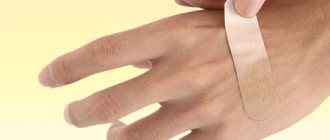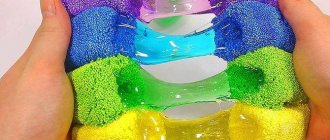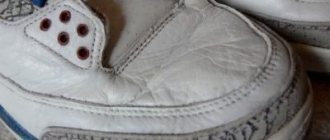After repairs and other work with various materials and substances, it can be very difficult to get your nails and skin in order. Often, traces of stubborn dirt cannot be completely removed with ordinary soap and a brush. Some try to get rid of them using more aggressive methods that can damage the skin. There are also special means for getting rid of various types of dirt . These liquids can be purchased at the store or prepared independently at home.
Cleansing skin and nails from fuel oil
To remove traces of fuel oil from your hands, it is recommended to use the following methods:
- Getting rid of stains using chemicals (washing powder, special store-bought compositions for cleaning stubborn stains from leather, car shampoo or solvents, the safest of which is motor oil).
- Removing dark matter using folk remedies that do not have such an aggressive effect on the skin.
The first method of preparing a composition that can remove traces of fuel oil from clothes : you need to take a container, pour a handful of starch and soda into it, pour in ammonia and turpentine (0.5 tbsp each). Mix the ingredients to a paste , apply to the skin of your hands or clothes and wait until the substance dries. Wash off with warm water and soap. You just have to pay attention that this product can ruin dyed fabrics. Therefore, before using it, it is better to test it on a small piece from the reverse side. The second fairly effective substance for cleansing the skin of fuel oil is coffee grounds. You just need to rub your hands and other dirty areas well with it, and then wash it off along with the dirt.
Elderberries also have cleansing properties ; with their help you can easily get rid of fuel oil on the skin. To do this, you need to crush them and rub them thoroughly with your hands - the dirt will come off. Unripe red currants or gooseberries have approximately the same effect. Sorrel can be used for the same purposes.
Removing traces of acrylic paint
Acrylic paint is water-soluble with a film-forming agent in its composition, and if you thoroughly wash your hands with soap immediately after finishing the repair work, not a trace will remain of it .
But the situation is different with stains that have dried out and are quite deeply ingrained into the skin and nails. During this time, the film former hardens, and it becomes a little more difficult to wash off the paint .
In order to wipe acrylic paint from the skin after 30-60 minutes and up to a day, you need to use any product that can break down fat. This could be dishwashing liquid, vinegar, or solvent. To soften a hardened stain, you need to rub it more than once. If the traces of acrylic paint are more than a day , then it is more difficult to deal with them; you will need other means, such as white spirit, kerosene or gasoline . Acetone or nail polish remover without acetone can also help. To soften the film, you need to act on the stain for at least half an hour. The downside is that these liquids are quite aggressive on the skin, so after using them you need to use a nourishing hand cream or restorative baths.
Removing oil paint marks
If your hands are slightly dirty, butter or vegetable oil can help solve this problem.
You need to take a small amount onto a cloth and rub the stains with it until they dissolve. This may take some time, but it will not harm the skin. Among chemical products, nail polish remover can help. The same white spirit or acetone. These liquids are usually used if the area of contamination is large. But they can dry out the skin a lot, so after cleansing you need to use a cream.
If dye gets on your hair, it is better to remove it with oils.
How to dissolve bitumen - methods of cleaning and dissolving bitumen + Video
The relevance of bitumen stains for city dwellers
Since bitumen surrounds the inhabitant of the urban jungle on all sides, very often, especially in the hot season, the question arises of how to remove bitumen from the surface of a car, shoes, clothes, flooring, etc. After all, the places where this black resinous material gets in can be very different.
Almost every owner of a car other than black has regretfully noticed black tar marks from the road surface on the fenders, arches (and even above). Owners of white dress sandals found outrageous black stains on the heels and sides of their shoes after walking on sidewalks heated to boiling point. That is, bitumen has to be removed from different surfaces.
Of course, in order to get less dirty, you can avoid walking on asphalt in the heat at all, but go during this period to places where there is almost no asphalt. For example, to a village or to the sea or somewhere else, under palm trees. But if you travel to your destination on a hot highway in your car, you will still need to remove bitumen stains from parts of its body. Moreover, it is better to do this before the resin “stems”.
The principle of choosing a product for removing bitumen stains
Actually, the issue here is resolved quite simply. It is good to purchase a product for removing bitumen stains; such compositions in aerosol containers or regular bottles are sold in automotive chemical departments. You can use simpler liquids, like white spirit or gasoline. The issue of bitumen solubility has already been discussed above.
Do not remove the hardened layer of resin mechanically. This can damage the top layer of paint and disrupt its polishing. You may need to apply a remover or solvent several times to remove tar stains. After the result is achieved without fanaticism, the area should be washed with car shampoo, wiped and lightly polished.
In general, there are many solutions on how to remove bitumen stains. You just need to remember that bitumen is a natural solvent, and take into account the basis on which the annoying stain fell. Thus, an attempt to wash off a resin stain from a polyester fabric with acetone will lead to hopeless damage to the entire product. In any case, when planning to use the cleaning composition for the first time, it is better to try it on hidden areas of clothing.
Choosing how to wash bitumen on work clothes, given the natural nature of the fibers, is not so difficult. You can use removers or benzene solvents, as in the case of a car, the amount and gradualness of resin removal depends on the thickness of the applied layer. It is also necessary to take into account the penetration of resin microparticles into the structure of the fabric fibers.
Textiles, carpets and floor coverings – how to properly remove bitumen stains?
After removing the resinous crust from the fabric, a stain remains; in this case, how to wash bitumen from clothes is not difficult to decide; final removal of the darkened fibers in the places of the former stain will be required. To do this, you need to wash the fabric using detergents. Experts say that powders with active oxygen in granules (for example, Vanish) work well.
The methods are similar when determining how to remove bitumen from thinner items. After all, not only can damage to the integrity of the fabric occur, stains and stains often appear, which also mercilessly spoil your favorite item of clothing
It is important to use purified gasoline with a low octane number (Zippo), or special solvents called bitumen
Of course, clothes should be washed with powders at the water temperature specified by the fabric manufacturer; see this information on the tags. In all cases of working with stains on clothing, it is necessary to wash without waiting for the area treated with the composition to dry.
When stains get on the surface of paths or floor carpets and rugs, in search of something to clean bitumen stains from them, a regular aerosol can of WD40 can help. This composition based on mineral oil, white spirit, carbon dioxide, and inert additives (as you can see, the composition almost repeats the list of natural bitumen solvents) manages to cope with contaminants quite decently. Afterwards the area is washed with carpet cleaners.
How to remove bitumen from the floor if there is no carpet under your foot at the right time is determined by the floor covering. Solvents that can, along with dirt, remove the entire area of linoleum or varnish from the board do not need to be used, even in small quantities. Here you can choose turpentine, kerosene, gasoline, WD, etc. Immediately after removing the dirt, the area should be washed with neutral powder or soap.
Means for removing traces of machine oil
Any person, even those who do not deal with car repairs, can encounter a stain from machine oil, because you can get dirty with this liquid even on escalators or in public transport. It is not so easy to wash off these stains, but it is quite possible.
If the stains are fresh and small in size, regular laundry soap with 72% fat content will help. You need to thoroughly wash your hands with it, using a brush if necessary. There is also a rather unusual way to remove machine oil stains from your hands - you just need to buy a carbonated drink like Coca-Cola. You need to wash your hands with it, then with water and then use the cream. You can also get rid of fresh marks using butter or vegetable oil by rubbing your hands with a cotton pad or napkin soaked in it. Baking soda diluted with water to form a thick sour cream can remove strong traces The mixture is applied to contaminated areas and rubbed into the skin, then washed off with warm water. You can also use dishwashing detergent for cleaning. This liquid will get rid of traces of machine oil in 3 minutes , but they may remain under the nail plates and will have to be bleached. If the skin reacts with irritation to the procedures, you need to use a cream with a thick consistency. white spirit will help get rid of it . Apply a small amount of this liquid to a cloth and rub the problem area with it, then wash your hands well with soap and apply a rich cream. There are also pastes specially created for washing motor oil. They do their job well and cleanse not only the skin, but also the nail area from stains, without having a negative effect on them. Moreover, to remove marks you don’t need water at all, just a few napkins.
Removing fresh grout
The seams will have to be cleaned after grouting in any case, regardless of the preparatory work. The composition hardens within half an hour. At this time, the grout dries only superficially; it is still dangerous to apply force. But this is the ideal time to remove excess material, which is more difficult to remove once fully cured.
Immediately after work, within half an hour, a sponge, detergent, and warm water are used to remove fresh composition. The rag needs to be washed more often, because it becomes clogged with the composition. The first stage of cleaning is complete when the sponge is no longer dirty.
For initial cleaning, it is good to take rags designed specifically for washing cars. They absorb moisture well without leaving streaks.
On video: How to clean epoxy grout from tiles
How to remove traces of cement from hands and nails
Cement is a rather harmful substance for the skin. Those who have ever gotten dirty with it know that it causes dryness, itching and burning. Sometimes cement masses can even corrode the skin. Therefore, removing this unsafe composition from your hands is a priority task after repair work.
Fresh cement marks can be washed off with soap or another detergent. But after a while the mixture dries out and you have to look for another way out. Special store-bought detergents containing an abrasive substance can come to the rescue. After removing the cement, it is very important to take care of the skin, lubricate it with a nourishing cream or even healing ointments, such as “Rescuer” (if there are obvious damage to the skin).
How to remove grout from tiles - features
Cleaning tiles from grout is carried out in several stages. Immediately after application, excess material is removed, then a day later you can carry out wet cleaning, and only after complete drying is a thorough cleaning of the tiles.
The frozen mixture is very difficult to remove. To do this, you need to use professional mixtures that are suitable for a particular type of grout. The fresh mass can be easily removed; for this you can use water, washcloths, detergents, and acid solutions.
Separate considerations should be given to cleaning the still-uncured compound immediately after application and scrubbing already dry grout during final cleaning. It is important to ensure the correct approach to each individual material. The type of tile is also taken into account. If it is decorative, everything needs to be done even more carefully, using gentle means. For artificial materials, granite, stone, mosaics, ceramics, a different approach is needed.
Before work, you need to come to terms with the fact that scrubbing cement and epoxy grout is a monotonous and labor-intensive task, for which you need to be prepared. Of course, you can invite a professional to do this, but if you understand some points, you can do everything yourself, saving on repair work.
When preparing for scrubbing, it is important to provide protective equipment:
- Gloves.
- Mask.
- Long sleeves.
- Glasses.
Dust and dry chemical composition will get on the skin and mucous membranes, so they need to be protected from irritation. You should also prevent anyone from being in the room during cleaning. The room must be constantly ventilated.
Removing sealant and plaster stains from hands
If you were not wearing gloves during repairs and there are traces of plaster or sealant left, the following methods will help you get rid of them:
- apply medical alcohol to a cloth or cotton pad and wipe problem areas;
- instead of alcohol, you can use gasoline or nail polish remover containing acetone;
- try to clean the skin with a cloth soaked in a 3% vinegar solution .
- Moreover, fresh plaster stains from the skin of your hands can be removed using water and regular soap.
How to choose the right product
This issue is quite easy to solve. The easiest way to clean oil products is to use a bitumen stain remover. These compositions can be purchased both in construction stores and in industrial chemical stores. They are sold in spray bottles or regular bottles. It is possible to use simpler liquids such as gasoline or white spirit.
Do not try to peel off the hard layer of resin yourself. This method increases the likelihood of damage to the top layer of paint and its polishing. The stripper and solvent will help remove the bitumen, but will likely need to be applied multiple times (depending on the thickness of the bitumen layer). After achieving the desired result, the newly cleaned area should be washed with car shampoo, then wiped and polished.
There are many solutions for how to wash oil. The main thing is to remember what natural solvents bitumen has, and take into account on what surface an unexpected stain appeared.
So, when you wash off a tar stain from polyester with acetone, the fabric can be thrown away immediately. Therefore, when using the composition to clean a product for the first time, first test it on hidden areas of things.
Cleansing skin from hardened glue and superglue
The biggest problem for people is removing glue like “Moment” or “Second” . These are quick-setting compounds that leave a hard film after drying. How to remove it? This can be done in several ways:
- Purchase a special product at the store to corrode such compounds. They cost around 70 rubles and cope quite effectively even with old stains from superglue ( "Contact", "Strength" and others). If it is necessary to remove marks on any surface, the gel is spread over it and left for about an hour. The product stays on the skin for no less time. As soon as the superglue layer begins to become softer, you need to take soap and a brush and remove it under water.
- Some use abrasive materials to scrape off hardened glue (pumice and others ). But if the layer is very thin and the mechanical forces are intense, then the skin can be injured.
- If it is not possible to get to the store and purchase a special remover, you can use chemical liquids available at home. It can be white spirit, acetone. These products will not remove superglue as effectively, but in a few steps they can do the job. After using them, you need to wash your hands with soap and protect your skin with a rich cream.
- If the skin is very sensitive and reacts strongly to chemical solvents, you can take a small amount of ordinary salt and rub it between your palms for a while. It is better to perform this procedure after first soaking your hands in hot water. After white foam forms, rinse it off and apply nourishing cream to the skin. A body scrub with a large number of large particles can also cope with the function of salt.
- The pharmacy sells Dimexide , which can also soften frozen superglue. To do this, you need to apply it to the fabric and apply it to the stain. After a few minutes, when it softens, remove with warm water and a sponge.
If the glue is not completely wiped off, do not be upset. After a few days, it will detach itself along with the dying pieces of skin.
Removing Epoxy Grout
Epoxy compounds are difficult to clean off tiles after they have hardened. They serve for more than 30 years without changing their attractive appearance. However, if you do not have time to remove excess material in time, the aesthetics will suffer significantly.
Epoxy grouts are resistant to water, detergents, abrasives and acidic compounds. This is good for long-term use, but it interferes with making everything beautiful. Such grout must be scrubbed with special means. The representative is the cleaning agent Litokol. There is also Litonet gel, which is good for cleaning grout from a vertical surface.
Litonet gel is a special composition for scrubbing epoxy-based grout. It also copes well with oil, wax, grease, foam, and ink.
This is an alkaline solution that is suitable for any type of tile; it can be diluted in every possible way to obtain the desired concentration of the cleaner. Can be used on ceramic tiles, natural stone, clinker, porcelain tiles and others.
Graphite Grease Removers
Graphite grease is not easy to remove from skin. dishwashing detergent for this purpose to dissolve the dirt. But you shouldn’t expect clean nails, and the skin will be dry after the procedure, which will require additional moisturizing. Gasoline will help wash off graphite grease almost instantly. Although it is better to save this product for various surfaces or clothing, and not for the skin, since this substance has a very negative effect on human tissues and organs. It is better to always have with you a special remover for complex skin stains, which contains much less substances that destroy the lipid layer of the skin than the same washing powder or dishwashing detergent.
How to wash bitumen mastic from clothes
Tar, bitumen and other by-products of petroleum refining are used in various areas of daily life. You don't have to be a construction worker or road repairman to get a slap of bitumen.
You won’t find this petroleum product anywhere in the city: undried asphalt that has melted from the summer heat, fresh waterproofing on the canopy of a house. They often become sources of black slaps on clothes or shoes. It's a shame if it's white clothes.
It can be difficult for an ordinary person to remove such contaminants without experience in this matter. At first, it may even seem like you have to throw away your favorite jeans, jacket or sweater. Although bitumen and tar are very corrosive substances, in most cases they can be removed at home.
How to clean tar and bitumen from clothes











